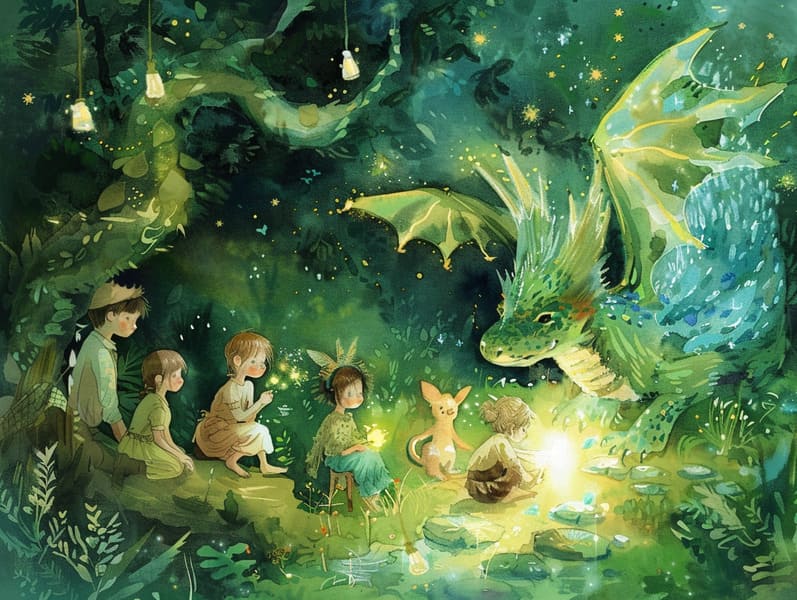A Brief History of Timeless Fairy Tales and Its Invariable Captivation.
A Brief History of Timeless Fairy Tales and Its Invariable Captivation.
Blog Article

Famous fairy tales have ancient roots. These tales have been conveyed from one generation to the next millennia before they were ever written down. They emerged from a variety of traditions, including Asian traditions. They were initially conveyed among older generations, often carrying themes and messages aligned with the societal norms and beliefs of the time.
Jacob and Wilhelm Grimm, Jacob and Wilhelm (the Grimm brothers), were among the first to collect many of these beloved fairy tales. Their published works, "Grimm's Folk Tales," included tales like "Cinder Maid," "Hansel and Gretel," and "Schneewittchen," which have since become classics in the world of beloved fairy tales. Similarly, the Danish author's whimsical tales, such as "The Mermaid's Tale," and "The Little Duckling," have stolen hearts worldwide, cementing their place in the pantheon of iconic fairy tales.
Despite their age, fairy tales remain as applicable as ever, especially as nighttime stories for kids. These enchanting tales are now available in diverse formats, including gorgeously illustrated books, captivating animations, and free fairy tales online.
Their persistent charm can be ascribed to several enchanting factors:
Crucial Morals: Old fairy tales often provide important moral lessons. Stories like "The Story of the Boy Who Cried Wolf" teach the benefit of honesty, while "The Hare and the Tortoise" highlight the virtues of determination and humbleness. These tales offer kids clear distinctions between right and wrong, helping to shape their moral compass in a tender yet important way.
Empathy and Awareness: Fairy tales frequently illustrate personalities facing problems and hurdles, provoking children to identify with their struggles and boost their triumphs. For instance, "The Story of Beauty and the Beast" highlights the necessity of looking beyond appearances to appreciate the real character of a soul, enhancing understanding and appreciation.
Cultural Appreciation: Many traditional fairy tales are interwoven with the cultural contexts from which they grew. Understanding these narratives can provide informative snapshots into different historical contexts, developing a sense of world understanding and appreciation.
Inventiveness and Fantasy: The fantasy-filled elements in fairy tales—magic wands—trigger children’s creative dreams. These fairy tales transport readers to supernatural realms, inspiring fantastical thinking and a sense of amazement that stays a lifetime.
Ancient fairy tales are not only charming but also enlightening. They provide charming tools in promoting various mental and emotional abilities in young ones. When ancient fairy tales are spoken out loud, they nurture verbal skills by introducing new linguistic elements and elaborate sentence structures. This practice also advances listening skills and concentration, as young readers remain attentive, eager to see what happens next.
Furthermore, conversing about the themes and characters of ancient fairy tales can cultivate problem-solving abilities and intellectual skills. Young readers are guided to identify patterns, expect results, and figure out cause and effect. These debates also boost young ones communicate their thoughts and feelings, advancing their emotional intelligence.
In today’s high-tech era, the accessibility of digital fairy tales has made these tales more attainable than ever. Web-based platforms and software share ample collections of timeless fairy tales that can be seen or played anytime, anywhere. Fairy tales read aloud are particularly well-liked, giving an enjoyable way for little ones to savor these fantastical tales. Audio stories and read-aloud videos bring characters and settings to life, often supported by fantastical musical scores and background music that enrich the narrative journey.
The everlasting appeal of classic fairy tales lies in their ability to adjust to changing times while keeping their central values. Contemporary revisions of these tales often showcase more varied figures and modern settings, making them understandable to today’s audience. However, the underlying themes of daring, benevolence, and equity remain unchanged, continuing to touch kids of all ages.
Timeless fairy tales also offer a sense of reassurance and familiarity. They render a ordered narrative with a apparent beginning, middle, and end, often drawing to a close with the settlement of conflicts and the triumph of honesty over deceit. This consistency can be soothing here for young readers, affording a sense of sturdiness in an unpredictable world.
Classic fairy tales continue to bewitch and edify new generations, maintaining their beauty and meaningfulness in modern society. As nighttime stories for kids, they extend a perfect blend of wonder and wisdom, cultivating moral values, empathy, and creativity. The proliferation of digital fairy tales and the sought after status of fairy tales told out loud ensure that these traditional fairy tales remain attainable to new generations.
By sustaining and telling these tales, we continue to admire the rich tapestry of storytelling and cultural heritage. Whether you are discovering a artistically illustrated book, discovering a virtual collection, or listening on an audio story, the majesty of traditional fairy tales is always within reach. These tales illustrate of the unchanging power of storytelling and its ability to bring us together across centuries and lands.
Whether you are accessing a beautifully illustrated book, perusing a virtual collection, or listening on an audiobook, the radiance of popular fairy tales is always within reach.
These fairy tales point out of the perpetual ability of narratives and its ability to bring us together across epochs and places, weaving a spell that charms and informs alike.